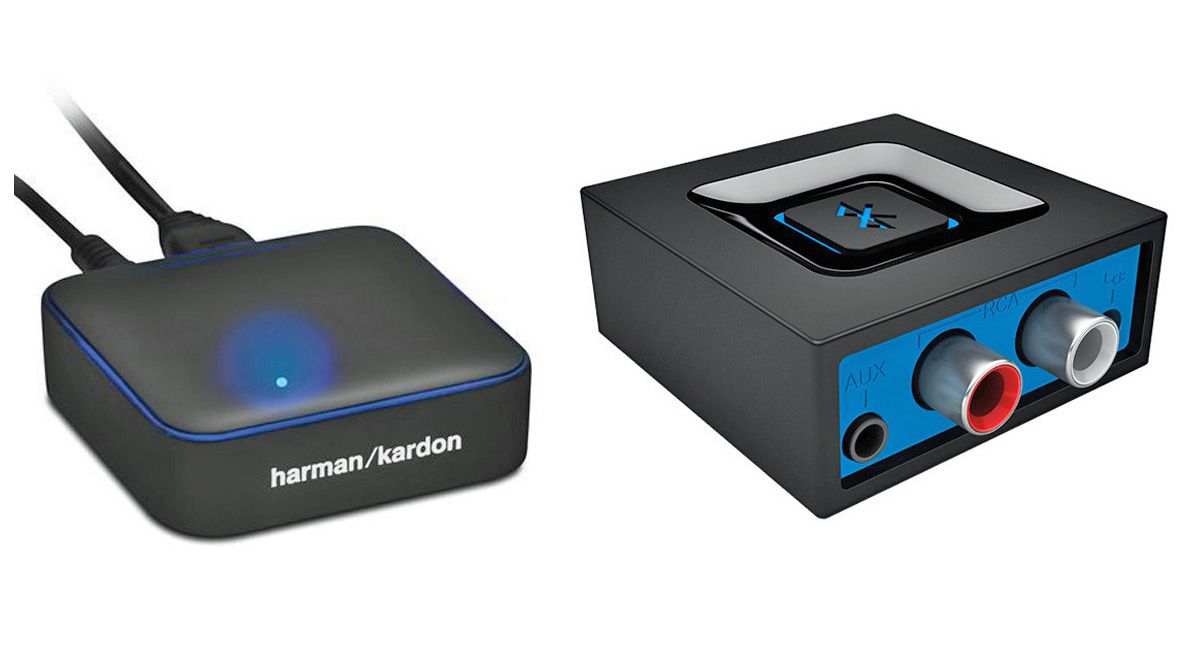How Wireless Mic Works – Unlocking the Secrets of Seamless Sound
A wireless mic works by transmitting audio signals through radio waves, allowing for cordless audio recording and amplification. Wireless microphones have revolutionized the world of audio communication by eliminating the need for physical connections between the microphone and the sound system.
These devices operate by converting sound waves into electrical signals, which are then transformed into radio frequency waves. These waves are transmitted by the microphone to a receiver, which converts them back into audio signals, ready to be amplified and heard.
This wireless technology offers mobility and flexibility, allowing performers, presenters, and speakers to move freely without the constraints of cables. Whether in live performances, public speaking engagements, or broadcast scenarios, wireless microphones have become an essential tool for clear and seamless audio transmission.
Understanding The Basics Of Wireless Microphones
Wireless microphones have become an integral part of various professional audio setups, enabling performers and speakers to move freely without the constraint of cables. Whether you are a musician, presenter, or public speaker, understanding the basics of wireless microphone technology is essential to ensure reliable and high-quality sound transmission.
Introduction To Wireless Microphone Technology
Wireless microphone technology allows audio signals to be transmitted without the use of physical cables. Instead, the microphone captures sound, converts it into an electrical signal, and then wirelessly transmits it to a receiver. This wireless transmission relies on radio waves, typically in the UHF or VHF frequency bands, ensuring stable and interference-free audio.
Components Of A Wireless Microphone System
A wireless microphone system consists of several essential components that work together to capture, transmit, and reproduce sound. These components include:
- Microphone: The microphone captures the audio signal through its built-in transducer, such as a dynamic or condenser element. It converts sound waves into an electrical signal.
- Bodypack transmitter: The bodypack transmitter connects to the microphone and wirelessly transmits the audio signal to the receiver. It is typically used with Lavalier or headset microphones.
- Handheld transmitter: The handheld transmitter combines the microphone and transmitter into a single unit. It is commonly used by vocalists and presenters due to its convenience and mobility.
- Receiver: The receiver picks up the wireless transmission from the transmitter and outputs the audio signal. It can be connected to a sound system, mixer, or recording equipment.
The Role Of Transmitters And Receivers In Wireless Audio Transmission
In wireless audio transmission, transmitters and receivers play crucial roles in ensuring seamless communication between the microphone and the sound system. The transmitter receives the audio signal from the microphone and wirelessly sends it to the receiver.
The receiver, on the other hand, picks up the wireless signal from the transmitter and converts it back into an analog or digital audio signal. It then outputs this signal for amplification or recording purposes, allowing the sound to be heard by the audience.
Exploring Different Types Of Wireless Microphones
Wireless microphones come in various types, each suited for different applications and preferences. Some common types include:
| Type | Description |
|---|---|
| Lavalier | Small, lightweight microphone that can be clipped onto clothing. Ideal for presentations, interviews, and stage performances. |
| Headset | Microphone combined with a transmitter, allows singers and presenters to hold and control their audio signal directly. |
| Handheld | Microphone combined with a transmitter, allowing singers and presenters to hold and control their audio signal directly. |
| Instrument | Designed to capture the sound of musical instruments. These wireless microphones often feature specialized mounting options or pickups. |
Understanding the basics of wireless microphone technology empowers you to choose the right system for your specific needs. Whether you are performing on stage, conducting interviews, or giving presentations, wireless microphones offer enhanced flexibility and convenience in the world of audio.
Choosing The Right Frequency For Your Wireless Mic
Choosing the right frequency for your wireless mic is crucial in ensuring optimal performance. Understand how wireless mics work and select the frequency that offers clear audio, minimal interference, and better sound quality. Expert tips can guide you in making the right choice for your specific needs.
Importance Of Frequency Selection In Wireless Microphone Operation
Choosing the right frequency for your wireless microphone system is crucial for seamless and reliable operation. With the ever-increasing demand for wireless audio, it is essential to understand how frequencies affect your microphone’s performance. The frequency you select determines the range, clarity, and interference resistance of your wireless mic. Therefore, taking the time to make an informed decision can make a world of difference in your audio setup.
Factors To Consider When Selecting A Frequency Band
Several factors should influence your decision when it comes to selecting a frequency band for your wireless microphone system. Taking these factors into account will help ensure optimal performance and minimize the chances of encountering interference issues.
- Local regulations: Different countries may have specific regulations regarding frequency usage for wireless devices. It is essential to comply with these regulations to avoid legal issues and to ensure interference-free operation.
- Available frequency spectrum: The radio frequency spectrum is shared among various wireless devices. It is crucial to assess the available frequency space in your location to avoid overcrowding and potential interference.
- Interference sources: Identify potential sources of interference in your environment, such as Wi-Fi networks, other wireless systems, and electronic devices. Avoid frequencies that are prone to overlapping with these interference sources.
- Signal strength and range: Consider the size of the venue and the range required for your wireless microphone system. Ensure the frequency band selected provides ample signal strength and coverage for your specific needs.
Understanding Frequency Interference And How To Mitigate It
Frequency interference can degrade the performance of your wireless microphone system, leading to unwanted audio disruptions and dropouts. It is important to understand the types of interference and how to mitigate them.
- Co-channel interference: This occurs when multiple wireless microphones operate on the same frequency, resulting in signal collision. Avoid selecting frequencies that are commonly used in your vicinity.
- Adjacent-channel interference: This interference happens when wireless devices operate on nearby frequencies, causing overlapping signals. Choose frequencies with sufficient space between adjacent channels.
- Intermodulation interference: Intermodulation occurs when two or more wireless signals mix, creating unwanted frequencies. Use frequency coordination software to identify potential intermodulation issues and select clean frequencies.
- Perform thorough frequency scanning using wireless system tools to identify available frequencies and potential interference.
- Consider using frequency coordination software to optimize frequency selection and minimize the risk of interference.
- Observe good antenna placement practices and use high-quality antennas to enhance signal strength and reduce interference.
- Regularly monitor and adjust frequencies to adapt to changing interference conditions in your environment.
Tips For Finding The Optimal Frequency For Your Wireless Microphone System
Finding the optimal frequency for your wireless microphone system can ensure smooth and uninterrupted audio transmission. Consider the following tips when selecting the frequency:
- Refer to local frequency allocation charts or contact local regulatory authorities for frequency availability and restrictions.
- Consult with professional audio engineers or technicians to obtain expert advice on frequency selection.
- Use frequency scanning equipment or software to identify open channels and avoid occupied frequencies.
- Test the selected frequency in the actual performance environment to assess signal strength and identify potential sources of interference.
- Keep up-to-date with frequency usage trends and consider future-proofing your wireless microphone system by selecting frequencies with less congestion.
Best Practices For Setting Up And Using Wireless Microphones
Setting up and effectively using wireless microphones requires understanding how they work. Discover the best practices for optimizing wireless mic performance in this informative guide.
Proper Microphone Placement For Optimal Sound Quality
When it comes to using wireless microphones, proper placement is essential for achieving optimal sound quality. Placing the microphone correctly ensures that it captures clear and natural audio. Here are some guidelines to follow:
- Position the microphone close to the sound source: Keep the microphone as close as possible to the person speaking or the musical instrument being played. This minimizes background noise and maximizes the volume and clarity of the desired sound.
- Avoid obstructions: Ensure that the microphone is not obstructed by objects such as clothing or instruments. This interference can affect the quality of the sound captured.
- Use windshields or pop filters: In outdoor settings or in situations where there’s a possibility of plosive sounds like “P” and “B” sounds, using windshields or pop filters can help prevent unwanted noise and distortion.
- Consider microphone directionality: Different microphones have different directionality patterns, such as cardioid, omnidirectional, and supercardioid. Understand the characteristics of your microphone and position it accordingly to maximize sound pickup and minimize background noise.
Techniques For Reducing Background Noise And Feedback
Background noise and feedback can often disrupt the audio quality when using wireless microphones. By implementing the following techniques, you can minimize these issues:
- Perform a sound check: Before a live event or presentation, conduct a thorough sound check to identify any buzzing or feedback issues. Adjust the microphone placement or gain levels accordingly to reduce background noise and maintain a clean sound.
- Use equalization (EQ): Utilize the EQ settings on the mixer or audio system to refine the sound and reduce certain frequencies that may contribute to feedback or background noise. Adjusting the frequencies can help achieve a balanced, clear sound.
- Minimize ambient noise: Close any unnecessary doors or windows to reduce external noises that can interfere with the microphone’s signal. Also, avoid placing wireless microphones near sources of interference, such as amplifiers or WiFi routers.
Tips For Preventing Signal Dropouts And Interference
Signal dropouts and interference can be frustrating, causing intermittent sound or completely cutting off the audio transmission. Use the following tips to prevent or minimize signal disruptions:
- Select appropriate frequency channels: Opt for frequency channels that are less congested and have minimal interference. Consult the user manual or manufacturer’s guidelines for recommended channels.
- Keep distance from other wireless devices: Avoid placing wireless microphones near other wireless devices that operate on similar frequencies, such as smartphones or WiFi routers. Interference from these devices can degrade the audio quality.
- Utilize diversity reception: If available, use wireless microphone systems with diversity reception. This technique utilizes multiple antennas to improve signal strength and minimize signal dropouts, ensuring a reliable audio transmission.
Guidelines For Managing Multiple Wireless Microphone Systems In A Single Location
When managing multiple wireless microphone systems in a single location, precise coordination and organization are crucial for smooth operation. Follow these guidelines to efficiently manage multiple systems:
- Assign non-overlapping frequency channels: Ensure that each wireless microphone system operates on a different frequency channel to prevent interference between systems.
- Create a frequency coordination plan: Develop a plan that specifies the frequency assignments for each system and ensures compatibility with other wireless devices in the area.
- Label and organize equipment: Clearly label and organize each wireless microphone system and its corresponding accessories to maintain clarity and avoid confusion during setup and operation.
- Monitor for interference: Regularly monitor the performance of all wireless microphone systems and adjust frequencies or settings if any interference is detected.


Credit: www.scribd.com
Troubleshooting Common Issues With Wireless Microphones
Wireless microphones have revolutionized the world of audio, offering a level of convenience and freedom unparalleled by their wired counterparts. However, like any technology, they can sometimes encounter technical issues that disrupt the smooth flow of sound. In this section, we will explore some common problems that arise with wireless microphones and provide troubleshooting tips to help you address them effectively. Whether you’re a performer, an audio engineer, or simply someone who enjoys using wireless microphones, understanding how to identify and resolve these issues will ensure that you have a seamless and uninterrupted audio experience.
Identifying And Addressing Audio Dropouts And Signal Distortion
One of the most frustrating issues you may encounter with wireless microphones is audio dropouts — those unexpected moments when the sound suddenly cuts out. To identify the cause of this problem, there are a few steps you can take:
- Check the microphone’s batteries: A weak battery can cause intermittent audio dropouts. Ensure that the batteries are fresh and correctly inserted.
- Inspect the transmitter and receiver: Check for any loose connections or damaged cables that might be affecting the signal flow.
- Verify the signal strength: Move closer to the receiver or transmitter to see if the dropouts decrease. If they do, it could indicate that the distance between the microphone and its receiver is causing signal loss.
If you’ve tried these steps and are still experiencing audio dropouts, signal distortion might be the culprit. Signal distortion can occur due to interference or incompatible frequency settings. This brings us to the next common issue we’ll address.
Dealing With Frequency Conflicts And Interference
Wireless microphones operate on specific frequencies, and conflicts with other nearby devices can lead to interference and a degraded audio quality. Here are some steps you can take to resolve frequency conflicts:
- Change the frequency: Many wireless microphones have multiple frequency options. Switching to a different frequency can help overcome interference issues.
- Scan for open frequencies: Utilize a frequency scanner or spectrum analyzer to identify available frequencies in your location. This way, you can select a frequency that is less congested and prone to interference.
- Adjust antenna placement: Ensure that the transmitter and receiver antennas are properly positioned and facing in the correct direction to optimize signal reception.
- Minimize nearby devices: Keep other wireless transmitters, Wi-Fi routers, and electronic equipment away from the wireless microphone system to reduce the chances of interference.
By proactively addressing frequency conflicts and interference, you can reduce the chances of audio dropouts and ensure a clear and uninterrupted audio signal.
Resolving Microphone Compatibility Issues
Another common issue that arises with wireless microphones is compatibility problems. Sometimes, a microphone may not work as expected with a particular receiver or transmitter. Here are some troubleshooting steps to consider:
- Check compatibility specifications: Ensure that the microphone is compatible with the receiver/transmitter model. Refer to the user manuals or consult the manufacturer’s website for compatibility information.
- Verify input/output settings: Double-check that the microphone and receiver/transmitter settings are properly configured to work together.
- Test with a different system: If possible, try using the microphone with a different wireless system to determine whether the incompatibility is specific to a certain combination of devices.
By ensuring compatibility between components, you can eliminate potential issues and ensure that your wireless microphone system functions seamlessly.
Troubleshooting Battery And Power-related Problems
Finally, battery and power-related problems can also be a source of frustration with wireless microphones. Here are some troubleshooting steps to address such issues:
- Replace the batteries: If the microphone is not turning on or experiencing intermittent power loss, the batteries may need replacement. Use fresh batteries of the appropriate type and ensure they are correctly inserted.
- Check power supply and connections: If you are using a wireless system that relies on a power supply, ensure that it is connected securely and receiving power. Verify that the power cables are undamaged and plugged into the appropriate outlets.
By staying mindful of battery life and ensuring a reliable power source, you can prevent unexpected interruptions during your wireless microphone use.
Maintenance And Care For Your Wireless Microphone System
Proper maintenance and care are crucial for ensuring the longevity and optimal performance of your wireless microphone system. By following a few simple steps, you can keep your equipment in excellent condition, avoiding any unexpected glitches or failures during important performances or events. This section will guide you through essential tasks such as cleaning and upkeep, battery management, regular system checks, and tips for prolonging the lifespan of your wireless microphone equipment.
Cleaning And Upkeep Of Wireless Microphones And Accessories
Regular cleaning and upkeep of your wireless microphones and accessories are essential for maintaining their performance and extending their lifespan. Here are some guidelines to help you keep your equipment in top shape:
- Clean the handheld microphones using a soft, lint-free cloth to remove any dust or debris. Avoid using harsh chemicals or solvents that could damage the microphone’s exterior.
- For microphone capsules, use a small brush or a cotton swab to gently remove any dirt or debris. Be careful not to press too hard or damage the delicate components.
- Inspect the cables and connectors regularly to ensure they are in good condition. Replace any damaged cables or connectors promptly to prevent signal loss or interference.
- Store your wireless microphones and accessories in a clean, dry environment when not in use. Avoid exposing them to extreme temperatures or humidity.
- If you are using microphone windscreens or foam covers, replace them regularly to prevent the buildup of bacteria or mold.
Battery Management And Replacement
Proper battery management is crucial for the uninterrupted performance of your wireless microphone system. Here are some tips to help you manage and replace your batteries effectively:
- Always use high-quality batteries recommended by the manufacturer for your specific wireless microphone model.
- Before every performance or event, check the battery levels of all the wireless microphones and accessories. Replace any low or depleted batteries to avoid sudden failures during the performance.
- Consider using rechargeable batteries to minimize waste and save costs in the long run. Follow the manufacturer’s instructions for charging and replacing rechargeable batteries.
- Dispose of used batteries properly, following local regulations and environmental guidelines.
Regular System Checks And Inspections
Performing regular system checks and inspections is an essential part of maintaining your wireless microphone system’s reliability. Here are some key areas to focus on during your checks:
- Test the wireless microphone signal strengths in different areas of your performance space to ensure uniform coverage. Make adjustments if necessary.
- Check for any signs of interference, such as static, dropouts, or distorted audio. Troubleshoot and identify the source of interference promptly.
- Inspect the antennas and connectors for any damage or loose connections. Tighten any loose connectors and replace damaged antennas if needed.
- Update the firmware of your wireless microphone system regularly, following the manufacturer’s instructions.
Tips For Prolonging The Lifespan Of Your Wireless Microphone Equipment
To maximize the lifespan of your wireless microphone equipment, here are some additional tips to keep in mind:
- Avoid dropping or mishandling the microphones or accessories, as this can damage internal components.
- When not in use, store the microphones and accessories in protective cases to prevent accidental damage.
- Keep your wireless microphone system away from excessive heat, direct sunlight, and moisture.
- Regularly update and maintain your audio equipment, including mixers and amplifiers, to ensure compatibility and optimal performance.
- Follow the manufacturer’s guidelines for any specific care or maintenance instructions for your wireless microphone system.
Frequently Asked Questions For How Wireless Mic Works
How Does A Wireless Microphone Work?
A wireless microphone works by converting sound waves into radio frequency signals, which are then transmitted to a receiver unit for amplification and reproduction.
What Are The Advantages Of Using A Wireless Microphone?
Using a wireless microphone offers several advantages such as increased mobility, freedom of movement, elimination of cable restrictions, and the ability to easily switch between different audio sources.
Are Wireless Microphones Reliable?
Yes, wireless microphones are highly reliable. They use advanced frequency-hopping technology to ensure a stable and clear audio signal, even in congested RF environments.
Conclusion
Understanding how wireless microphones work can greatly enhance your audio experience. By using radio waves to transmit signals, wireless mics eliminate the need for cumbersome cables, allowing for greater mobility and flexibility. Whether you’re a performer, presenter, or simply using a mic for recreational purposes, knowing the basics of wireless technology can help you achieve professional-quality sound.
So, harness the power of wireless and take your audio to the next level today!




